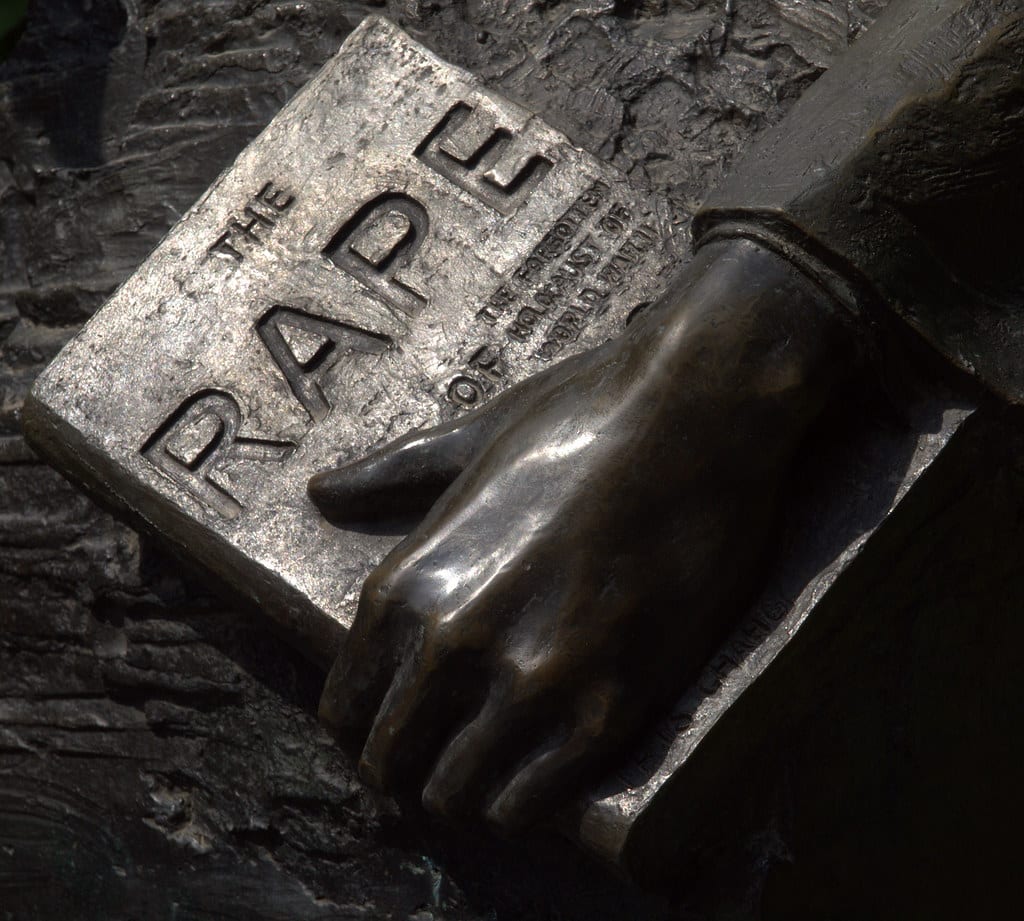The “Rape of Nanking” is a high watermark of imperial savagery, even in the context of the violent and brutal Japanese Empire. This frenzy of rape and genocide was committed against a Chinese populace after their government abandoned the city and the international community watched in impotent horror as a proud Japanese military conducted itself with dishonor. But courageous individuals defied gangs of Japanese soldiers, exhibiting bravery and moral dignity. In her book The Rape of Nanking, Iris Chang concentrates on the eight weeks of terror which in 1937 took the lives of hundreds of thousands.
Iris Chang faced both academic criticism and hate mail when The Rape of Nanking was published in 1997. The aggressive critics did not offer credible refutation to her conclusions and what she presented in her book. It was widely known that the Japanese government had committed atrocities during its imperial phase, including the months of misery that it spent terrorizing civilians and prisoners of war in Nanking. But the true extent and details of the atrocity had never been properly recorded until the publication of Chang’s book. Japanese nationalists immediately and shamelessly attacked the author, desperate to protect the legacy of an ugly empire.
Many of the sources in the book came from eye witness accounts including those who had survived rape and maiming, not to mention a series of confessions from Japanese soldiers who expressed regret after the ejaculation of defeat had allowed remorse to sober their minds. Contemporary news pieces also contributed to her research along with evidence in the many unmarked graves.
It was a crime scene of such a magnitude that only a government could commit, so terrible that it required thousands of willing participants, each using the uniform they wore as a shield from any moral culpability. A crime where Japanese soldiers used their penis and bayonet with such painful and deadly ferocity against babies to the elderly while boasting a Bushido code of honor. It was one of the many crimes against humanity that twentieth century governments inflicted on the world and its innocent. And Chang successfully compiled the evidence against the criminals of Nanking.
Outside of Japan many know that the Japanese Empire was terrible. It was marked with savagery and acts of cowardly violence against the unarmed and innocent. But today many Japanese barely know the details of the savagery their government committed. They understand that they were defeated and see the fire bombing and atomic devastation of cities as punishment for such.
While it’s acknowledged that bad things were done by some people in the Empire, the details and scale are often omitted. This is the pretense of all governments, especially from cultures steeped in pride. Iris Chang’s book is cold water down the spine of Japanese nationalists who cling to the romantic delusions of a better time. A better time for their ancestors perhaps, but not for their victims.
Chang captures the many human stories of courage. An unlikely savior, humanitarian Nazi John Rabe, used his status and position to protect and shelter Chinese civilians from the savage clutches of the Japanese soldiers. At times he risked his own life as he stood between armed Japanese soldiers and the innocent prey that they were seeking to defile and murder. In general the Westerners who bore witness to the savagery reported upon it and did their best to save as many lives that they could. In all approximately twenty foreigners managed to rescue as many as 200,000 Chinese from the Japanese military.
The book covers the military incompetence of the Chinese army that led to the sacrifice of the city, with soldiers dressing as civilians in the hopes of fleeing as refugees. Japanese soldiers showed no mercy to the Chinese army once captured, murdering them in such a large scale that the nearby Yangtze river was full of corpses. With a perverse fetish for murder the Japanese soldiers ran a competition between officers to see who could behead the most Chinese prisoners while others were used for bayonet practice.
The photos inside the book reveal frozen moments of horror, a morbid memento of vulgar savagery as young women lay splayed naked, having been raped and then mutilated to death by the soldiers of Japan. One photo shows a bayonet still deeply embedded inside a dead victim’s vagina along with an image of many severed heads. Another photo is of Chinese civilians bound and coiled in fear as Japanese soldiers, under the guise of training, plunge bayonets into them with sadistic malice. Others of children who had their heads doused in gasoline and then set alight. Chang no doubt came across scores of other photos (many taken by official Japanese government photographers), though the ones contained in the book only add a sickening weight to the written accounts, a frozen reminder of what men are capable of.
Acts of individual courage were exhibited by those like Li Xuuyin, a pregnant eighteen-year-old who fought off several Japanese soldiers with her bare hands. Determined not to be raped, she suffered thirty-seven bayonet wounds before she was left for dead by her tormentors. It would take several months for Li to recover but she would go on to live a long life as a grandmother. And Dr. Robert Wilson, the lone surgeon in the city at the time, fought tirelessly to save lives with his volunteers and minimal resources.
The book includes the comptemporary Japanese critics of the atrocity, including from official photojournalists reporting what they witnessed with revulsion and numbness, unable to stop events only to record them with cold honesty.
Japanese General Iwane Matsui was the initial commander in the operations around Nanking, and once reports of murder, rape, and looting had reached him did his best to scold those involved. He would then go on to tell anyone that would listen about the ill-disciplined atrocities of the soldiers in his charge. “My men have done something very wrong and extremely regrettable,” Matsui said in a dinner toast to a Japanese diplomat. Retiring from the army in 1938, he would go on to be tried and executed for war crimes by the Allies.
To curb the rape frenzy and prevent venereal diseases, the military hierarchy created the “comfort women” system whereby females, most against their will, were recruited to serve as pleasure slaves for the soldiers of empire. So as a means of reward and to control the deadly lust of its men, the Japanese government provided them with girls and women to rape.
As a book it is well written and edited, not just a compilation of statistics and facts, but a narrative that gives the reader space to digest information. Chang is a talented researcher and interviewer whose work gives a degree of intimate revelation to the lives of the victims which only makes the subject matter harder to swallow. You do not read this book to enjoy it or to be entertained but to pay respect to those who suffered and to learn about the shared history of the world.
The Rape of Nanking is a reminder that even when humanity can be terrible and cruel there are individuals who will stand up with courage and risk everything to help strangers. In her own way Iris Chang did that herself, a young woman undertaking the task to tell the many stories of a horrible history. Facing scorn and death threats, along with the brutal reality of the subject matter, Chang slipped into depression and took her own life in 2004. Her book is a testament to her willingness to tell the truth, to champion the lost victims of history, and to put faces on the forgotten many who remain lost and decomposed in unmarked graves.
The rape of Nanking is a crime committed by the Japanese government and the individuals who were responsible for the atrocities. But what occurred isn’t unique to the Japanese, and applies to all of humanity.
































